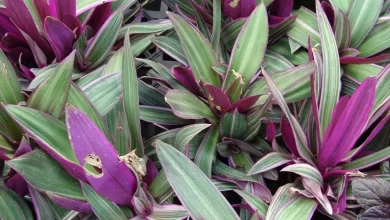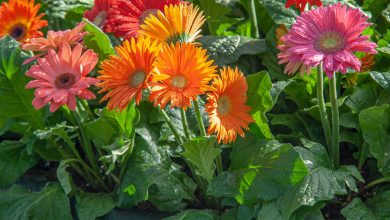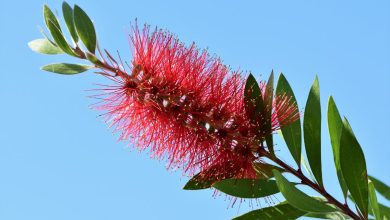Cedar of Lebanon: [Cultivation, Care, Pests and Diseases]
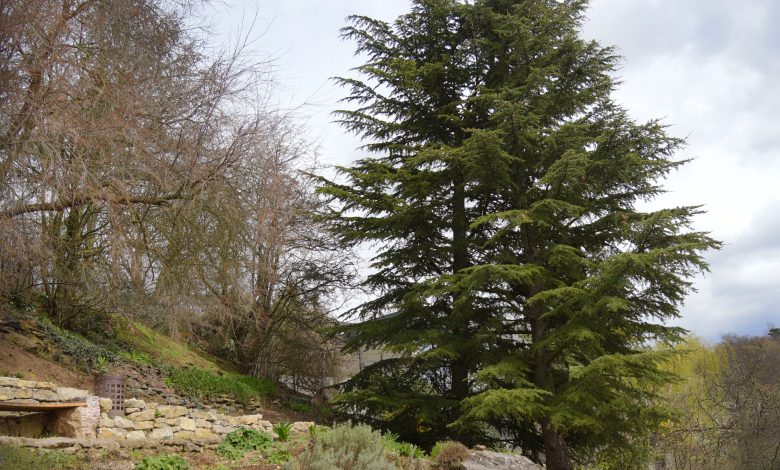
Important points when planting Cedar of Lebanon
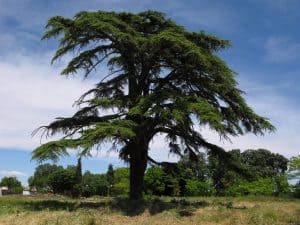 When? in spring and autumn it is convenient to be planted.
When? in spring and autumn it is convenient to be planted.- Where? In the open field and in gardens with good light and spaciousness
- How do we prepare the land? With organic compounds mixed with soil
- How do we sow? We dug a fifty centimeter hole where we buried the seeds and with seedlings
- How do we pay? With periodic padding of organic matter.
- Ideal temperature? It supports high and low temperatures alike, up to 30 degrees below zero.
- How do we water? It needs good watering, avoiding excess because its roots can rot.
- Diseases and pests? It can be attacked by fungi, but its main enemy is climate change.
What is the cedar of Lebanon?
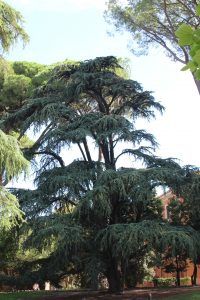 The Cedar of Lebanon or Cedar of Solomon whose scientific name is Cedrus libani A Rich, has its origin in the mountainous regions of Lebanon, but it has also made a presence in Syria and Turkey.
The Cedar of Lebanon or Cedar of Solomon whose scientific name is Cedrus libani A Rich, has its origin in the mountainous regions of Lebanon, but it has also made a presence in Syria and Turkey.
It is a needle-shaped coniferous tree with evergreen leaves. It has an impressive vegetative growth, of great beauty thanks to its pyramid-shaped crown that sometimes resembles a Christmas tree and can reach 40 m in height.
It expands throughout the eastern Mediterranean basin. We find it in mountain forests between 900 and 2,000 meters above sea level (masl), its average being 1,500 masl.
It is a tree with heavy, dense, strong, long-lasting and aromatic wood that does not support excess humidity in the air, but firmly withstands the iciest cold and oppressive heat.
It has a prominent trunk whose wood is highly sought after in carpentry, and its intense green leaves withstand strong winter temperatures without falling. Throughout history the Cedar of Lebanon has been used in the construction of ships, temples and buildings, especially in Jerusalem or ancient Egypt.
Where should we plant it?
We will plant it in land with light and fresh soils, which are its favorites, where there is little humidity, without excess drainage.
When should the Cedar of Lebanon be grown?
The ideal time is at the beginning of October, in autumn, in order to give you enough time before the arrival of the winter cold.
The multiplication must be done from seeds, in spring.
How do we prepare the land?
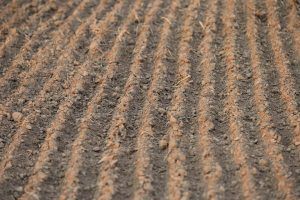 As it is a slow-growing tree, we must take extreme precautions to achieve its healthy growth, taking into account that in its early years organic matter is essential for its development.
As it is a slow-growing tree, we must take extreme precautions to achieve its healthy growth, taking into account that in its early years organic matter is essential for its development.
This specimen bets on soils rich in calcium and magnesium, on calcareous soils with an alkaline pH where they find part of the nutrients in the ground because their roots tend to spread for tens of meters.
How to plant a cedar of Lebanon step by step?
plant seedlings
- First of all, we will dig a fifty centimeter hole, where the expansion
- of its roots will be guaranteed by eliminating all kinds of stones and other elements that prevent its rooting with the earth.
- Then, we will cover the hole halfway with decomposed organic matter mixed in equal parts with the soil before proceeding with planting.
- Immediately afterwards, the seedling must be carefully removed from the pot, leaving its root ball intact, avoiding mistreating the roots at all costs.
- Once we have planted it, we will wrap it with compost and soil and finally proceed to carry out a deep planting irrigation.
- We must water it abundantly the first years, taking care of the excess of water that can cause the rotting of the roots.
Multiplication
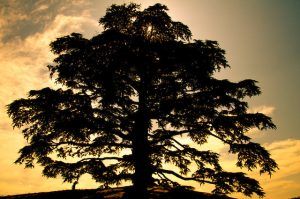 We will use seeds that will previously be soaked for 48 hours, a process that we will carry out outdoors and on light soil, in the spring time.
We will use seeds that will previously be soaked for 48 hours, a process that we will carry out outdoors and on light soil, in the spring time.
They should then be planted in a pot filled with a substrate with a lot of organic matter. Multiplication from seeds gives a positive response in spring.
Also the method of multiplication by cutting gives excellent results. To do this, the cuttings must be prepared at the end of spring or in autumn, under a greenhouse.
The layering must be done in spring, from a branch that will later tend to separate from the mother plant. The transplant will be carried out every two years, in spring or autumn, adding more sand and mulch to the soil mixture where it is to be placed.
However, we must always bear in mind that the Lebanon tree is an old-fashioned species, its reproduction method increases in size extremely slowly, so we must have a lot of patience and love when cultivating them.
What care does the cedar of Lebanon need?
Lightning
It is a fan of the sun, especially in the first years of life, although, in its first years of life, being a small plant, it can spend half a day in the sun and half a day in the shade.
Temperature
It is a tree capable of adapting to any climatic range, and it is classified in the Atlantic-continental- Mediterranean and mountainous environment. Therefore, it adapts equally to the high temperatures of the Mediterranean summer or the winter frosts of the continental climate.
Irrigation
It is a key factor that will help in the first 4 years of life. The water you receive will have a frequency between 2 to 3 times a week in summer and 1 in winter, unless there are heavy rains. Excess moisture damages it notably, because it will rot the roots and cause disease to the point of death.
Pass
 Regarding the subscriber, in each spring, periodic mulches with abundant organic matter are recommended and provide slow-release fertilizers rich in nitrogen to speed up the growth of the tree.
Regarding the subscriber, in each spring, periodic mulches with abundant organic matter are recommended and provide slow-release fertilizers rich in nitrogen to speed up the growth of the tree.
The spring season is also considered ideal to release nutrients from the manure and reduce water evaporation.
From time to time it is recommended to enrich the soil with mineral salts, and every two years, in spring or winter, add a bucket of mature organic fertilizer to the base of the trunk.
It is not pruned, its pyramidal shape is adopted naturally. Only old, crossed or very low branches should be removed, which should be eliminated, but pruning as such is not necessary.
In short, its care is limited to maintaining consistency and paying close attention to factors such as irrigation and fertilizer. In case of growing them in the garden, it is essential to ensure that they have a sunny exposure, which we will achieve by locating it in a position where it receives direct sun for a few hours a day.
What pests and diseases attack the cedar of Lebanon?
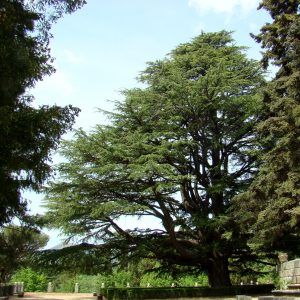 It is a tree that can be attacked by diseases developed by fungi due to the thermal difference between the hours of the day and night in the rainy season.
It is a tree that can be attacked by diseases developed by fungi due to the thermal difference between the hours of the day and night in the rainy season.
These diseases can be treated with systemic fungicides at the end of winter, and it is also advisable to use insecticides when it comes to the attack of merciless pests that have killed 7% of these trees in the Cedars of Lebanon Nature Reserve.
But the biggest enemy of these ancient trees that cause so much admiration in the forests and that do so much good to nature is climate change, which threatens the flora and fauna of the entire planet.
The Cedars of Lebanon have seen modern wars go by, imperturbable, keeping to their trunks with commendable stoicism, but if the attack on nature continues, it is believed that they will not be able to resist at the end of this century and many of its forests will tend to vanish.
Due to the considerable increase in temperatures due to the action of greenhouse gases, the cedars will only have a refuge for life in the upper parts of the mountains, since they need the cold to maintain themselves.
As time passes and temperatures rise, it is more difficult to achieve this goal, because scientists in the Middle East believe that, if the same situation continues, by the year 2100 a large part of the forests will have disappeared.
How long does the cedar of Lebanon live?
The cedar of Lebanon has a very high level of longevity, exceeding a thousand years of life.
In fact, there are specimens with wildlife that are between 2,000 and 3,000 years old.
How long does it take to grow the cedar of Lebanon?
It reaches a considerable height after spending at least 7 years after being planted.
Of course, this time will vary depending on the type of multiplication used.
How long does it take to produce fruit?
It all depends on the conditions of the environment in which it is planted. Generally, after 5 years it could start the production of flowers and fruits.
Can it be grown in a pot?
It can be grown in a pot only while it is a young tree, but its dimensions make it impossible to keep it that way forever.
How many times does the cedar of Lebanon produce fruit?
It carries out a single productive cycle during the year, in the summer months.
Should the cedar of Lebanon be pollinated to obtain fruit?
Yes, it must be pollinated and this action is carried out naturally by insects, such as bees.
How cold can Cedar of Lebanon tolerate?
It can tolerate cold that would be considered extreme for other species and even frost. The average is -30°C.
How many Lebanon cedar can be planted per hectare?
It is possible to plant between 100 and 150 specimens of Lebanon cedar, depending on the type of land to be occupied.
How much heat and/or drought can Cedar of Lebanon tolerate?
This is a species that lives in temperate climates, so exposure to high heat can be harmful. It is advised not to be above 29° C.
In addition, it is resistant to very specific droughts, but it is better that it has an efficient and regular irrigation system.

